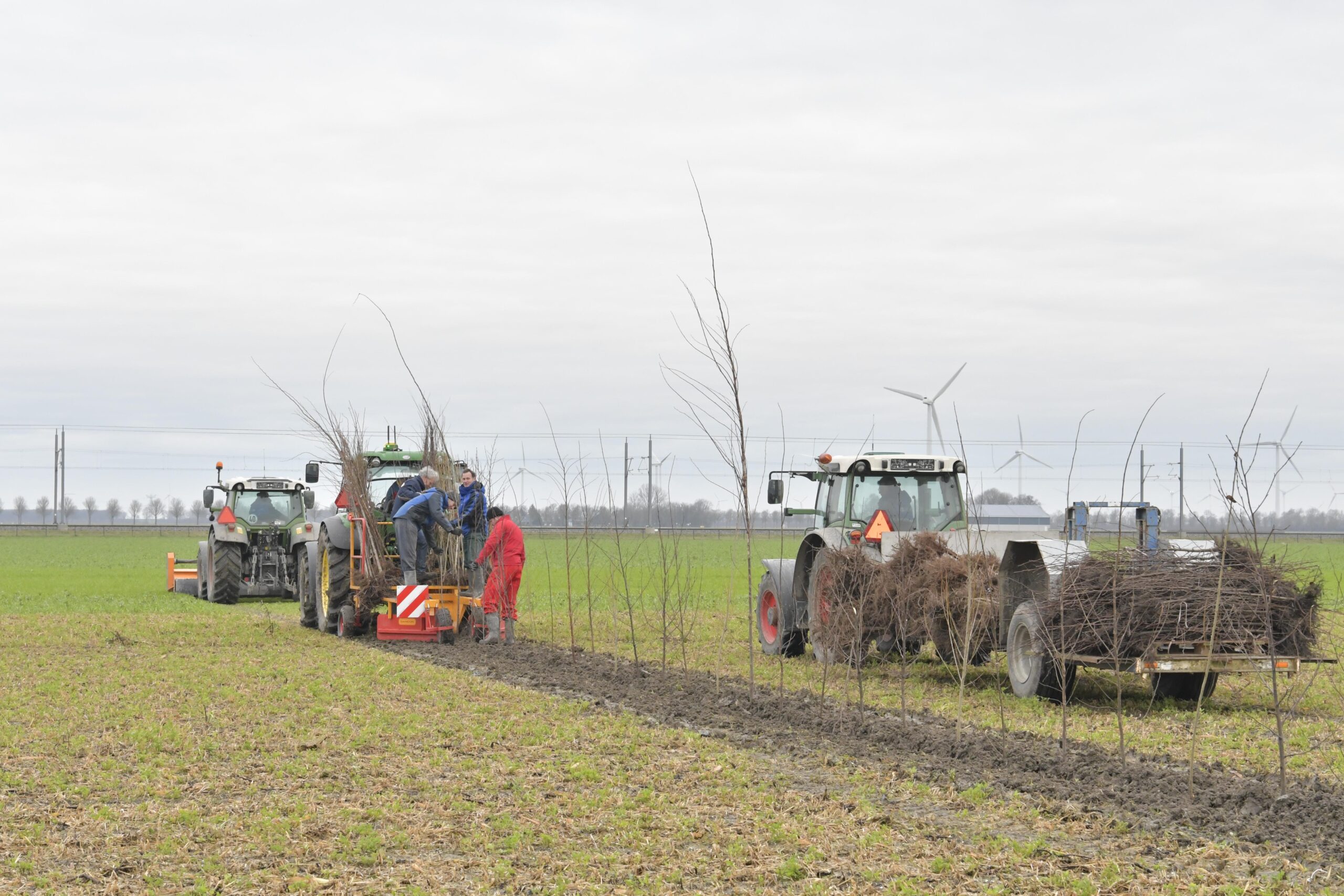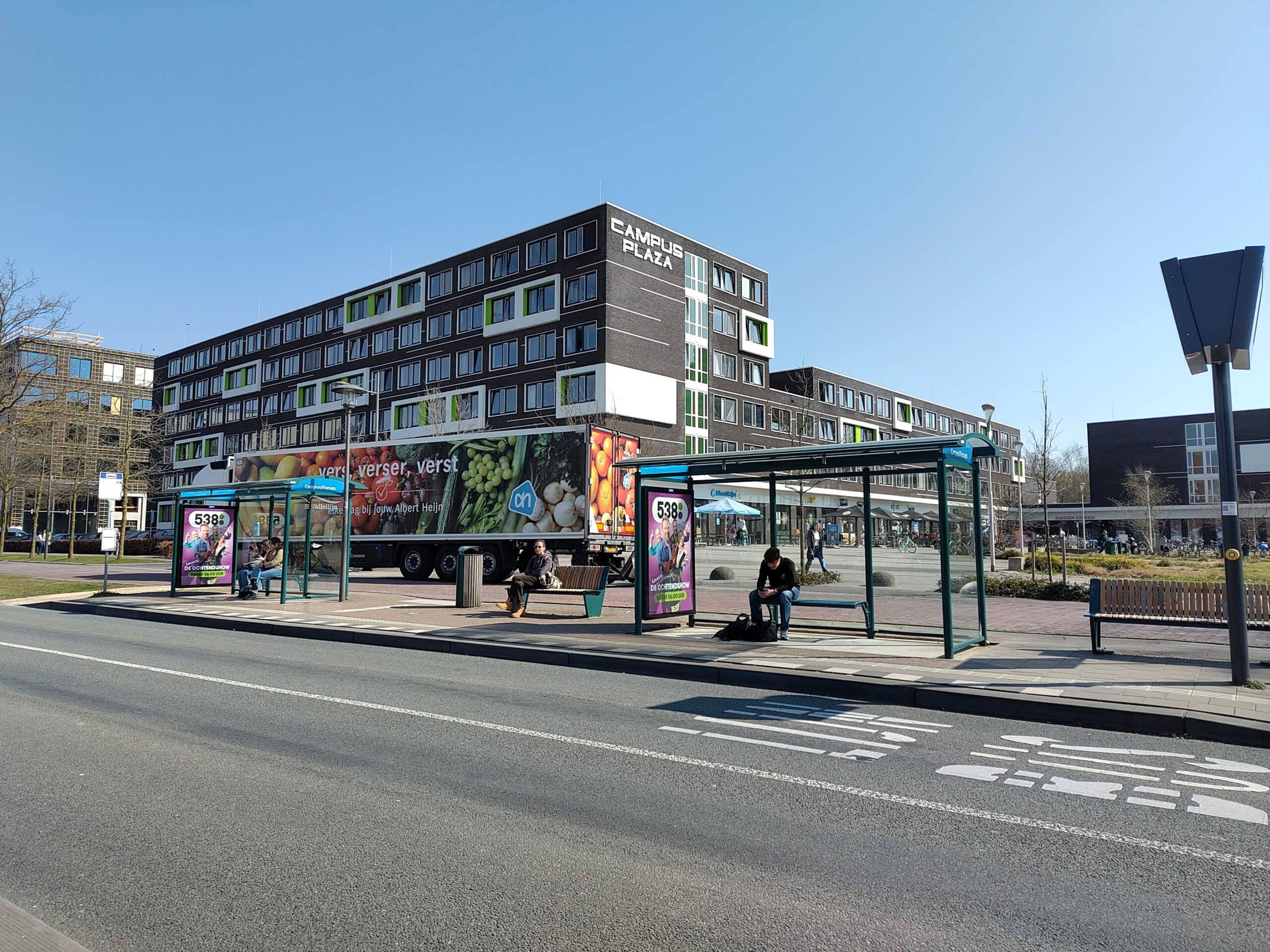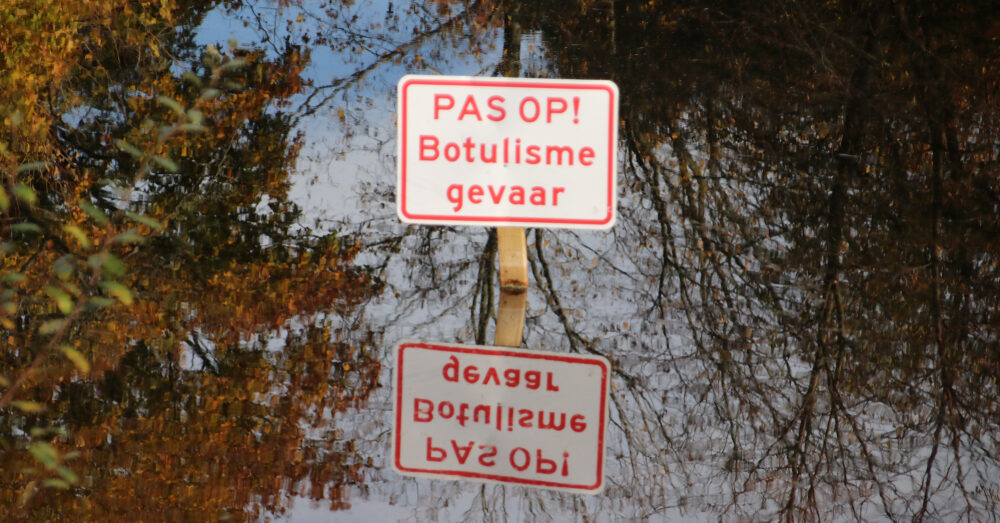Yesterday, WUR planted 1500 trees on 15 hectares of arable land in Lelystad, in the first large-scale Dutch facility for agroforestry research. The Field Crops business unit will be combining the cultivation of arable and horticultural crops with rows of trees — initially fast-growing trees such as elms and poplars, and later hazels.
Microclimate
‘There will be six long rows of trees with variations in the distance between them,’ says the research leader Maureen Schoutsen. ‘We want to measure the effect of the rows of trees on the microclimate, for example the wind speed — trees break the wind — but also the temperature and soil moisture content.’
‘Our hypothesis is that hedge banks improve growing conditions and therefore yields, but only from a certain distance from the row of trees. The yield may actually be lower in plots right next to the hedge bank. The overall effect should be positive, though.’ The experiment will also show how far apart the rows of trees need to be for the optimum effect.
Cropping plan
The researchers are using a cropping plan that includes potatoes, winter wheat, carrots, cabbage and spinach in rotation. The fast-growing trees were planted today and the hazels will follow at the end of the year. ‘The fast-growing trees should shield the hazels from the wind as they don’t like the wind. In eight years’ time, we’ll take out the fast-growing trees again.’
Income benefits
The Field Crops unit is also investigating whether the tree rows — a kind of strip cropping — impede the spread of plant diseases. In addition, the researchers will be assessing the soil fertility, biodiversity, CO2 uptake in the soil and any income benefits to the arable farmers from the nuts. ‘You have less area for your crops with the hedgerow trees but the remaining land may be more productive,’ explains Schoutsen.
Test Location
The agroforestry project is part of the Agroecology and Technology Test Location, which was set up two years ago. The research facility is funded by WUR and the experiment by the Agrifood Top Sector in a four-year research programme that farmers are involved in too. Schoutsen hopes there will be long-term funding for the Test Location. ‘Trees need time to grow so this is a long-term project. We expect the first scientific publications in six years but it will take 15 to 20 years before we have a mature agroforestry system.’

 Photo: Oane de Hoop.
Photo: Oane de Hoop. 

